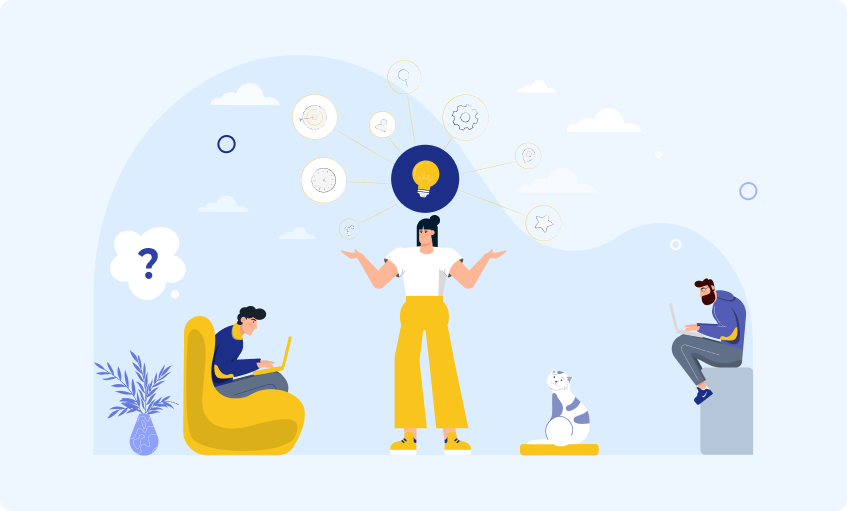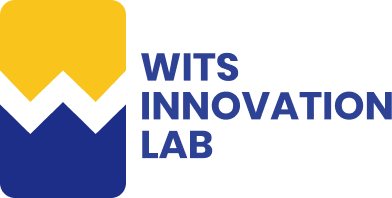AI is transforming the web development process by improving functional and structural design through automating repetitive tasks and offering enhanced user experiences and big data analyses. It simplifies various procedures, allowing developers to focus on more creative and strategic elements. In this article, we will delve deeper into the specifics of how AI is changing the web development process, supported by real examples, statistical data, and technical details.
1. AI-Enabled Code Generation
With GitHub Copilot, Amazon CodeWhisperer, and Google Codey, the world of code generation is finding new methods in AI code generation tools. For prediction, these tools generate code snippets, which enhances the development process since it involves the use of machine learning models.
For instance, GitHub Copilot utilizes OpenAI’s Codex model to propose appropriate code suggestions based on the context. GitHub stated that Copilot cuts coding time in half as developers can focus more on the solution rather than typing in sequences of repetitive commands.
For instance, GitHub Copilot utilizes OpenAI’s Codex model to propose appropriate code suggestions based on the context. GitHub stated that Copilot cuts coding time in half as developers can focus more on the solution rather than typing in sequences of repetitive commands.
Benefits of AI Code Generation
Increased Productivity: Auto-suggestions in code generation provide the developers with the opportunities to get ready-made lines or blocks of codes depending on the context of using these codes.
Reduced Errors: These tools prevent syntactical issues and improve the quality of the encoded work with relevant codes suggestions.
Enhanced Learning: Individual programmers, particularly novice ones, can discover how significant innovations fit into existing patterns and best practices from code suggestions produced by AI.
Example: GitHub Copilot
GitHub Copilot is one of the widely used tools in the industry for the automatic execution of code-related tasks. For instance, numerous developers at Shopify have mentioned that Copilot aids in increasing productivity and minimalizing code errors when implemented in the development system.
Reduced Errors: These tools prevent syntactical issues and improve the quality of the encoded work with relevant codes suggestions.
Enhanced Learning: Individual programmers, particularly novice ones, can discover how significant innovations fit into existing patterns and best practices from code suggestions produced by AI.
Example: GitHub Copilot
GitHub Copilot is one of the widely used tools in the industry for the automatic execution of code-related tasks. For instance, numerous developers at Shopify have mentioned that Copilot aids in increasing productivity and minimalizing code errors when implemented in the development system.
2. App Modernization with AI
AI is a very important tool in optimizing legacy applications so as to bring them into the modern world through code translation from one language to the other. With OpenAI’s ChatGPT, for example, managers who wish to migrate their codebases can do so efficiently and on a large scale within a short span of time.
For instance, it can also help in converting COBOL code to more contemporary languages such as Java or Python and thus, improve the scalability of the systems.
For instance, it can also help in converting COBOL code to more contemporary languages such as Java or Python and thus, improve the scalability of the systems.
Benefits of AI in App Modernization
Streamlined Transition: AI drives code translation, which means complex transformations of outdated applications do not stress developers.
Improved Performance: The optimization of current programming languages over previous ones includes improved performance, increased security, and better maintainability thus improving the application’s overall performance.
Cost Efficiency: Automating code translation eliminates the need for manually translating code, which is a time-consuming undertaking.
Example: Financial Institutions
A number of financial institutions still employ applications that are based on historical programming languages or architecture. Due to the use of AI in refactoring and the modernization of the code, financial institutions such as JP Morgan Chase have enhanced security, maintainability, and resilience, resulting in increased productivity, and reduced maintenance expenses.
Improved Performance: The optimization of current programming languages over previous ones includes improved performance, increased security, and better maintainability thus improving the application’s overall performance.
Cost Efficiency: Automating code translation eliminates the need for manually translating code, which is a time-consuming undertaking.
Example: Financial Institutions
A number of financial institutions still employ applications that are based on historical programming languages or architecture. Due to the use of AI in refactoring and the modernization of the code, financial institutions such as JP Morgan Chase have enhanced security, maintainability, and resilience, resulting in increased productivity, and reduced maintenance expenses.
3. Managing Technical Debt

Technical debt is defined as the extra work that arises when one opts to take a simple solution today when there exists a better approach, but time is a constraint. AI can identify and quantify sources of technical debt that can be used to address it. Tools like CodeClimate and SonarQube employ rational methods and algorithms for code scanning and categorizing the technical debts and tasks that require immediate action.
For example, these tools can perform an analysis of code base to check which libraries are outdated, which code is a duplicate, and what kind of coding practices should be avoided etc.
For example, these tools can perform an analysis of code base to check which libraries are outdated, which code is a duplicate, and what kind of coding practices should be avoided etc.
Benefits of AI in Managing Technical Debt
Automated Detection: Code review is done mechanically by special AI tools that help to find out the technical debt of the code that does not require code review.
Prioritization: AI techniques assess the relationship and dependence among different forms of technical debt to inform which actions to take first.
Continuous Monitoring: AI tools ensure that technical debts do not accumulate in code repositories as they constantly notify developers about potential new additions to the technical debt.
Example: Microsoft
Microsoft uses AI to control technical debt in its range of codebases. Employing AI-based code analysis tools, Microsoft is capable of pinpointing certain areas of code that may need to be refactored, enabling the organization to maintain the code’s quality and minimize future maintenance expenses.
Prioritization: AI techniques assess the relationship and dependence among different forms of technical debt to inform which actions to take first.
Continuous Monitoring: AI tools ensure that technical debts do not accumulate in code repositories as they constantly notify developers about potential new additions to the technical debt.
Example: Microsoft
Microsoft uses AI to control technical debt in its range of codebases. Employing AI-based code analysis tools, Microsoft is capable of pinpointing certain areas of code that may need to be refactored, enabling the organization to maintain the code’s quality and minimize future maintenance expenses.
4. Personalized User Experiences
With AI analytics, organisations get the right insight for identifying, segmenting and engaging the right audience for personalising the next best experience. To do this, user behavior, preferences and interaction data acquired through use of analytical tools can be employed to improve user interfaces and recommend content among other things.
For instance, using AI algorithms, specific chunk of data could be used to give out content recommendations that would definitely enhance customer satisfaction level and hence, customer loyalty.
For instance, using AI algorithms, specific chunk of data could be used to give out content recommendations that would definitely enhance customer satisfaction level and hence, customer loyalty.
Benefits of AI in User Personalization
Enhanced User Engagement: AI algorithms figure out user patterns and preferences, which gives developers a chance to build an understandable and emotionally appealing product, which drives people.
Targeted Recommendations: AI provides users with contents, products or services: recommend products or services based on users’ behaviors to gain higher click through rates.
Real-Time Customization: AI tools are more individual-focused since they offer immediate reactions of modifying content and home interfaces to reflect customers’ engagement.
Real-World Example: Netflix
Netflix incorporates big data and machine learning to recommend the best content to its users. According to the viewing history and ratings, Netflix recommends shows and movies to users and thus improves customers’ satisfaction and loyalty. It was also revealed that over 80% of what Netflix consumes is generated by the recommendations of its recommendation algorithms.
Targeted Recommendations: AI provides users with contents, products or services: recommend products or services based on users’ behaviors to gain higher click through rates.
Real-Time Customization: AI tools are more individual-focused since they offer immediate reactions of modifying content and home interfaces to reflect customers’ engagement.
Real-World Example: Netflix
Netflix incorporates big data and machine learning to recommend the best content to its users. According to the viewing history and ratings, Netflix recommends shows and movies to users and thus improves customers’ satisfaction and loyalty. It was also revealed that over 80% of what Netflix consumes is generated by the recommendations of its recommendation algorithms.
5. AI in Web Development
AI is bound to change how websites and software are built in terms of the development phase, which allows the developers to write better, scalable, and manageable codes. Kite and Tabnine are among the AIs for code completion that analyzes the patterns in the code, and have a code completion mechanism based on machine learning, to provide an auto-suggestion in real-time and thus decrease the time programmers spend on coding and the errors they make.
For example, Github in its recent research, states that AI enhanced code completing tools can help to save 20% of coding time and increase quality of the code by 15% at most (GitHub, 2020). Consequently, there are Codecov and CodeScene, which are the tools that analyze the quality of the code, recognize bugs, and offer recommendations to improve the code that developers write.
For example, Github in its recent research, states that AI enhanced code completing tools can help to save 20% of coding time and increase quality of the code by 15% at most (GitHub, 2020). Consequently, there are Codecov and CodeScene, which are the tools that analyze the quality of the code, recognize bugs, and offer recommendations to improve the code that developers write.
Benefits of AI in Web Development
Increased Efficiency: Some features that AI possesses is the ability to recommend code snippets and automate mostly routine tasks.
Improved Code Quality: With the help of AI-based tools, the codes are reviewed and bugs can be corrected right from the starting phase of development.
Enhanced Collaboration: AI helps enhance collaboration because the coding format is unquestionable and always up to par.
Example: Facebook
Currently, Facebook has incorporated the use of artificial intelligence to control its web development procedures. Sapienz is a code review tool developed by the company that uses artificial intelligence to scan new or modified code, evaluate it as well as mark or suggest any problematic areas. which has cut the time spent on code reviews to the bare minimum and enhanced the quality of the codes.
Improved Code Quality: With the help of AI-based tools, the codes are reviewed and bugs can be corrected right from the starting phase of development.
Enhanced Collaboration: AI helps enhance collaboration because the coding format is unquestionable and always up to par.
Example: Facebook
Currently, Facebook has incorporated the use of artificial intelligence to control its web development procedures. Sapienz is a code review tool developed by the company that uses artificial intelligence to scan new or modified code, evaluate it as well as mark or suggest any problematic areas. which has cut the time spent on code reviews to the bare minimum and enhanced the quality of the codes.
6. AI-Driven Testing and Quality Assurance
AI is impacting the testing and quality assurance phase in a big way or, in other words, testing teams can find and eradicate issues far quicker and effectively with the help of artificial intelligence. Automated testing tools like Selenium and Appium leverage machine learning algorithms in the analysis of user’s behavior, to find patterns as well as imitate.
For instance, these tools can be used to derive test cases from the application functionality, hence guaranteeing a complete set of test cases.
For instance, these tools can be used to derive test cases from the application functionality, hence guaranteeing a complete set of test cases.
Benefits of AI in Testing
Automated Test Case Generation: AI tools help in automatically creating test cases for the application, thus saving time involved in the manual creation of test cases.
Early Bug Detection: AI tools help to detect problems and glitches already at the stage of design and development, which is efficient compared to the type of repair, which is costlier.
Continuous Testing: Testing with the help of AI-based tools is done on an ongoing basis which guarantees that in case of appearance of any problems, they will be revealed at an early stage.
Example: Tosca
A study by Tricentis showed that testing with the help of AI tools can be 90% faster than manual testing and the test coverage can be 30% higher. Tricentis’ test automation tool is called Tosca: it is powered by AI and integrates the use of machine learning algorithms in test case generation and test execution.
Early Bug Detection: AI tools help to detect problems and glitches already at the stage of design and development, which is efficient compared to the type of repair, which is costlier.
Continuous Testing: Testing with the help of AI-based tools is done on an ongoing basis which guarantees that in case of appearance of any problems, they will be revealed at an early stage.
Example: Tosca
A study by Tricentis showed that testing with the help of AI tools can be 90% faster than manual testing and the test coverage can be 30% higher. Tricentis’ test automation tool is called Tosca: it is powered by AI and integrates the use of machine learning algorithms in test case generation and test execution.
7. AI-Powered Deployment and Maintenance
Even the deployment and maintenance phases are also affected by the involvement of AI. The modern tools used for managing deployments, such as Kubernetes and Docker incorporate machine learning to analyze application behavior in order to detect bottlenecks and decide on how to allocate the resources efficiently.
For instance, the use of AI can help in managing a process such as the deployment process by minimizing errors that may come up as well as maintaining the standard.
For instance, the use of AI can help in managing a process such as the deployment process by minimizing errors that may come up as well as maintaining the standard.
Benefits of AI in Deployment
Optimized Resource Allocation: Artificial intelligence processes specific application performance parameters and usage of resources to allocate resources.
Automated Deployment: Automation is another factor; using AI tools, the deployment process is conducted swiftly and without error as compared to manual processes where there is always a chance of a mistake being made.
Proactive Maintenance: These monitoring tools are automated with artificial intelligence that can diagnose the functioning of applications in real-time and give a hint of a possible failure or a need for correction.
Example: Puppet
As Puppet reported, Artificial Intelligence in the deployment tools can lead up to 50% in the time needed to deploy an application, together with up to 20% enhanced application performance. Puppet, an artificial intelligence deployment platform, incorporates the use of machine learning algorithms in decision-making and in giving optimal strategies and outputs on deployment processes to aid in the provision of efficient resource usage as well as a guarantee on application performance.
Automated Deployment: Automation is another factor; using AI tools, the deployment process is conducted swiftly and without error as compared to manual processes where there is always a chance of a mistake being made.
Proactive Maintenance: These monitoring tools are automated with artificial intelligence that can diagnose the functioning of applications in real-time and give a hint of a possible failure or a need for correction.
Example: Puppet
As Puppet reported, Artificial Intelligence in the deployment tools can lead up to 50% in the time needed to deploy an application, together with up to 20% enhanced application performance. Puppet, an artificial intelligence deployment platform, incorporates the use of machine learning algorithms in decision-making and in giving optimal strategies and outputs on deployment processes to aid in the provision of efficient resource usage as well as a guarantee on application performance.
Challenges and Considerations in AI-Driven Web Development

AI-driven web development has several drawbacks. Some of the big challenges that were highlighted include the quality of the training data, model bias, opacity, and explainability.
For instance, AI models need tons of good quality training data to arrive at their desired level of accuracy. Collecting and compiling this type of information may take time and is costly. Furthermore, it is also worth mentioning that it is impossible to completely eliminate biases from AI models, and this leads to the occurrence of certain consequences.
For instance, AI models need tons of good quality training data to arrive at their desired level of accuracy. Collecting and compiling this type of information may take time and is costly. Furthermore, it is also worth mentioning that it is impossible to completely eliminate biases from AI models, and this leads to the occurrence of certain consequences.
Benefits of AI-Driven Development
Data Quality: When it comes to training AI models, high-quality data is needed, which, most of the time, is very hard to come by and costly.
Bias and Fairness: It has been pointed out that there are the so-called introduced biases, which can rather negatively affect the fairness and accuracy of the structures.
Transparency and Explainability: To date, AI models work in a way that is hard for developers to comprehend, which is often referred to as the “black box” model
Example:
Currently, giant firms such as Google and Microsoft are developing AI ethics frameworks to overcome these drawbacks. Google’s AI Principles and Microsoft’s Responsible AI framework can be seen as strategies to ensure the AI systems being developed are indeed fair.
Bias and Fairness: It has been pointed out that there are the so-called introduced biases, which can rather negatively affect the fairness and accuracy of the structures.
Transparency and Explainability: To date, AI models work in a way that is hard for developers to comprehend, which is often referred to as the “black box” model
Example:
Currently, giant firms such as Google and Microsoft are developing AI ethics frameworks to overcome these drawbacks. Google’s AI Principles and Microsoft’s Responsible AI framework can be seen as strategies to ensure the AI systems being developed are indeed fair.
Conclusion: The Future of AI in Web Development
AI is not a futuristic concept that is still up for development, but it is currently being integrated into web development. The incorporation of AI technologies helps developers increase production, quality of code, and even user experience. AI is making significant impacts on the web development lifecycle; here, AI helps the teams to design, develop, test, and deploy the web application more effectively and efficiently. Remaining updated on developments and trends will be essential in a world that continues to rapidly change due to the advancements in technology.
Considering the dynamic nature of web development, developers, designers, and organizations are all set to adopt AI technologies as a real competitive advantage. The day is not far when web development will go completely AI driven, the potential is enormous.
Considering the dynamic nature of web development, developers, designers, and organizations are all set to adopt AI technologies as a real competitive advantage. The day is not far when web development will go completely AI driven, the potential is enormous.

Written by / Author
Manasi Maheshwari
Found this useful? Share With
Top blogs
Most Read Blogs
Wits Innovation Lab is where creativity and innovation flourish. We provide the tools you need to come up with innovative solutions for today's businesses, big or small.
© 2025 Wits Innovation Lab, All rights reserved
Crafted in-house by WIL’s talented minds

